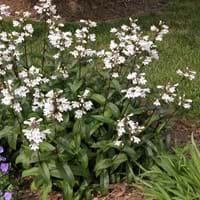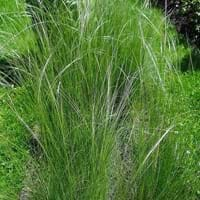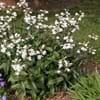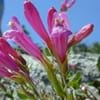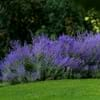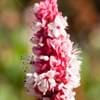Life Span
Perennial
Perennial
Type
Flowering Plants
Grass
Origin
Northeastern United States, Mid-Atlantic United States, North-Central United States, Central United States
Europe, Eastern Europe, Northern Europe, Western Europe, Russia/Siberia
Types
Not Available
Stipa Pennata, Stipa Gigantea, Stipa Capillata
Habitat
Fields, open Woodlands, Wood Margins
meadows, Slopes
USDA Hardiness Zone
3-8
6-9
Sunset Zone
1a, 1b, 2a, 2b, 3a, 3b, 4, 5, 6, 7, 8, 9, 14, 15, 16, 17, 18, 19, 20, 21, 22, 23, 24
3a, 3b, 4, 5, 6, 7, 8, 9, 11, 12, 14, 15, 16, 17, 18, 19, 20, 21, 22, 23, 24
Habit
Clump-Forming
Clump-Forming
Flower Color
White, Light Pink
Ivory, Light Green, Silver
Flower Color Modifier
Bicolor
Bicolor
Fruit Color
Brown
Ivory, Silver
Leaf Color in Spring
Dark Red
Green, Gray Green
Leaf Color in Summer
Dark Red
Light Green
Leaf Color in Fall
Dark Red
Blue Green, Gray Green
Leaf Color in Winter
Not Available
Not Available
Leaf Shape
Lance-shaped to oblong
Grass like
Plant Season
Spring, Summer
Summer, Fall
Sunlight
Full Sun, Partial Sun
Full Sun, Partial Sun
Type of Soil
Loam, Sand
Clay, Loam
The pH of Soil
Acidic, Neutral, Alkaline
Neutral, Alkaline
Soil Drainage
Well drained
Well drained
Bloom Time
Late Spring, Early Summer
Early Summer, Summer
Tolerances
Drought, Salt
Drought
Where to Plant?
Container, Ground, Pot
Ground
How to Plant?
Root Division, Seedlings, Softwood cuttings
Seedlings
Plant Maintenance
Medium
Medium
Watering Requirements
Average Water Needs
Average Water Needs
In Summer
Lots of watering
Lots of watering
In Spring
Moderate
Moderate
In Winter
Average Water
Average Water
Soil pH
Acidic, Neutral, Alkaline
Neutral, Alkaline
Soil Type
Loam, Sand
Clay, Loam
Soil Drainage Capacity
Well drained
Well drained
Sun Exposure
Full Sun, Partial Sun
Full Sun, Partial Sun
Pruning
Remove damaged leaves, Remove dead branches, Remove dead leaves
Remove damaged leaves, Remove dead branches, Remove dead leaves
Fertilizers
Complete balanced fertilizer
All-Purpose Liquid Fertilizer
Pests and Diseases
Leaf spot, Root rot
No serious insect or disease problems
Plant Tolerance
Drought
Drought
Flowers
Showy
Insignificant
Flower Petal Number
Single
Single
Foliage Texture
Medium
Fine
Foliage Sheen
Matte
Glossy
Attracts
Birds, Hummingbirds, Butterflies
Not Available
Allergy
Mild Allergen
Not Available
Aesthetic Uses
Borders, Wild gardens
Borders, Ground Cover
Beauty Benefits
Not Available
Not Available
Environmental Uses
Air purification
Air purification
Medicinal Uses
Tooth ache
Not Available
Part of Plant Used
Root
Fibre
Other Uses
Showy Purposes
suitable for cutting, used for making high quality paper
Used As Indoor Plant
Yes
No
Used As Outdoor Plant
Yes
Yes
Garden Design
Cutflower, Mixed Border, Wildflower
Foundation, Mixed Border
Botanical Name
PENSTEMON digitalis 'Husker Red'
STIPA capillata 'Bridal Veil'
Common Name
Husker Red Penstemon, Talus Slope Penstemon
Bridal Veil Needle Grass
In Hindi
Talus Slope Penstemon
Needle Grass
In German
Gehängeschutt Penstemon
Nadel- Gras
In French
Talus Slope Penstemon
aiguille Herbe
In Spanish
Astrágalo pendiente Penstemon
Hierba de aguja
In Greek
Αστράγαλος Κλίση Penstemon
βελόνα Grass
In Portuguese
Talus Penstemon Slope
agulha Relva
In Polish
Talus Slope Penstemon
igła do trawy
In Latin
Talus Clivo Persicaria
acus Grass
Phylum
Magnoliophyta
Magnoliophyta
Class
Magnoliopsida
Lilopsida
Order
Scrophulariales
Cyperales
Family
Scrophulariaceae
Poaceae
Clade
Angiosperms, Asterids, Eudicots
Angiosperms, Commelinids, Monocots
Tribe
Not Available
Stipeae
Subfamily
Not Available
Pooideae
Number of Species
Not Available
Not Available
Season and Care of Talus Slope Penstemon and Needle Grass
Season and care of Talus Slope Penstemon and Needle Grass is important to know. While considering everything about Talus Slope Penstemon and Needle Grass Care, growing season is an essential factor. Talus Slope Penstemon season is Spring and Summer and Needle Grass season is Spring and Summer. The type of soil for Talus Slope Penstemon is Loam, Sand and for Needle Grass is Clay, Loam while the PH of soil for Talus Slope Penstemon is Acidic, Neutral, Alkaline and for Needle Grass is Neutral, Alkaline.
Talus Slope Penstemon and Needle Grass Physical Information
Talus Slope Penstemon and Needle Grass physical information is very important for comparison. Talus Slope Penstemon height is 60.00 cm and width 30.00 cm whereas Needle Grass height is 76.20 cm and width 30.50 cm. The color specification of Talus Slope Penstemon and Needle Grass are as follows:
Talus Slope Penstemon flower color: White and Light Pink
Talus Slope Penstemon leaf color: Dark Red
Needle Grass flower color: Ivory, Light Green and Silver
- Needle Grass leaf color: Green and Gray Green
Care of Talus Slope Penstemon and Needle Grass
Care of Talus Slope Penstemon and Needle Grass include pruning, fertilizers, watering etc. Talus Slope Penstemon pruning is done Remove damaged leaves, Remove dead branches and Remove dead leaves and Needle Grass pruning is done Remove damaged leaves, Remove dead branches and Remove dead leaves. In summer Talus Slope Penstemon needs Lots of watering and in winter, it needs Average Water. Whereas, in summer Needle Grass needs Lots of watering and in winter, it needs Average Water.
